Vegetarian Enchilada Casserole Flavorful and Easy Meal
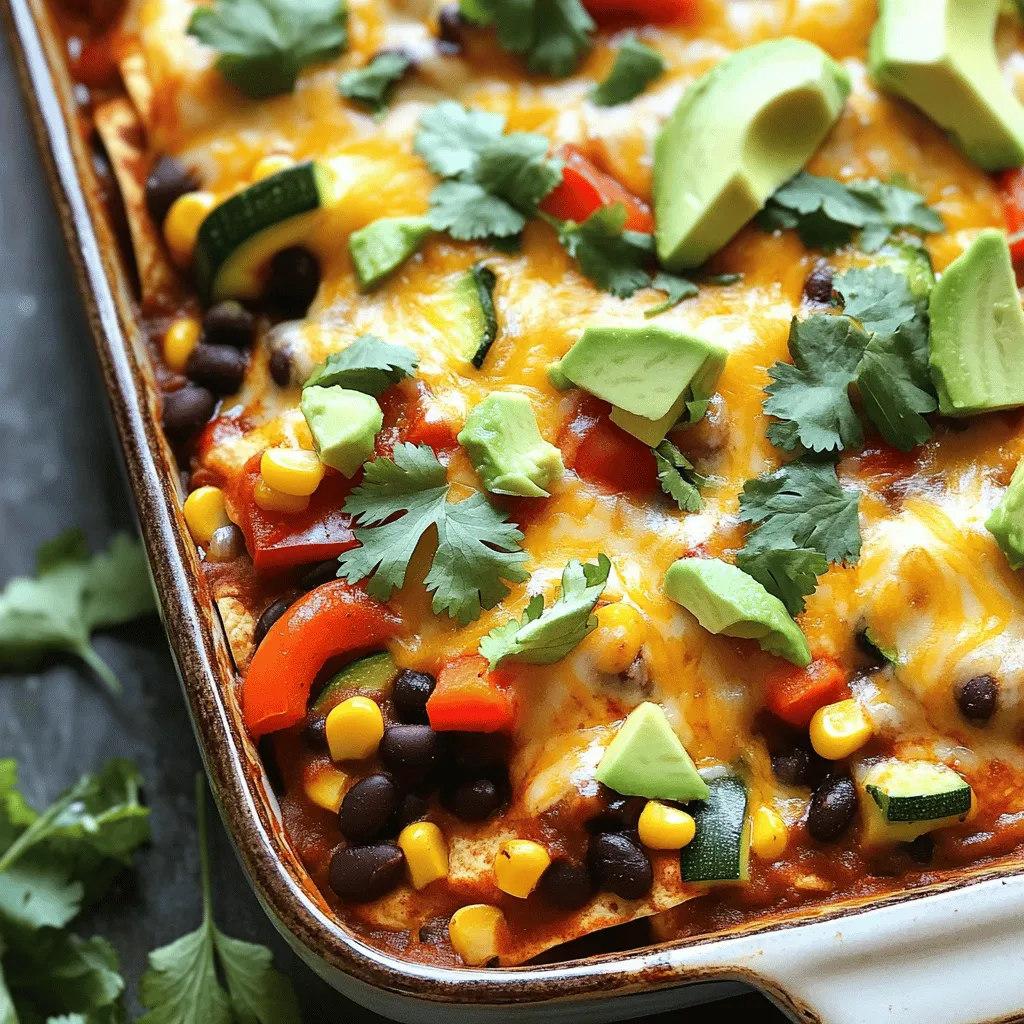
Are you ready to spice up your dinner routine with a delicious Vegetarian Enchilada Casserole? This easy meal is loaded with flavor and packed with nutrients. You’ll love how simple it is to make, from layer after tasty layer of black beans, corn, and fresh veggies, all topped with gooey cheese. In this post, I’ll guide you through every step to create this crowd-pleaser that’s perfect for busy weeknights. Let’s dig in!
Ingredients
To make a delicious vegetarian enchilada casserole, you need the right mix of fresh ingredients. Here’s a detailed list:
– 2 cups black beans, rinsed and drained
– 1 cup corn kernels (fresh or frozen)
– 1 bell pepper, diced (choose your favorite color)
– 1 small zucchini, diced
– 1 small red onion, finely chopped
– 2 cloves garlic, minced
– 1 teaspoon ground cumin
– 1 teaspoon smoked paprika
– 1 tablespoon olive oil
– 12 corn tortillas
– 2 cups enchilada sauce (store-bought or homemade)
– 1 ½ cups shredded Mexican cheese blend (or your preferred dairy-free cheese)
– Fresh cilantro, for garnish
– Avocado slices, for serving (optional)
– Sour cream or Greek yogurt, for serving (optional)
Each ingredient plays a key role in flavor and texture. Black beans add protein and creaminess. Corn brings sweetness and crunch. The bell pepper and zucchini add color and freshness. Onions and garlic create a savory base. The spices, ground cumin and smoked paprika, give the dish depth. Olive oil helps sauté the veggies and enhances the flavors.
Corn tortillas serve as the foundation, soaking up all the delicious sauce. Enchilada sauce ties everything together with a rich, tangy taste. Cheese melts on top, adding gooey goodness. Finally, garnishes like cilantro and avocado elevate the dish, offering freshness and creaminess.
Step-by-Step Instructions
Preparation
1. Preheating the oven: Start by preheating your oven to 375°F (190°C). This helps the casserole bake evenly and reach the right texture.
2. Sautéing the aromatics: In a large skillet, heat one tablespoon of olive oil over medium heat. Add the finely chopped red onion and minced garlic. Cook these for about 2-3 minutes until they become soft and clear. This step brings out their flavors and aromas.
Building the Casserole
1. Layering with tortillas: Grab a 9×13 inch baking dish. Spread a thin layer of enchilada sauce on the bottom. Lay three corn tortillas on top of the sauce. Overlap them slightly for full coverage.
2. Adding vegetable and bean mixture: Now, take half of your sautéed vegetable mix. Spread it over the tortillas. Sprinkle one-third of the shredded cheese on top. Repeat this layering with more sauce, tortillas, and the remaining vegetable mix. Finish with another layer of tortillas and the last of the sauce and cheese.
Baking the Casserole
1. Initial baking with foil: Cover your baking dish tightly with aluminum foil. Place it in the preheated oven and bake for 20 minutes. This helps steam the veggies and melt the cheese.
2. Final bake without foil for cheese browning: After 20 minutes, carefully take off the foil. Continue baking for an extra 10-15 minutes. The cheese should bubble and turn a lovely golden brown.
After baking, let the casserole cool for a few minutes before slicing. Enjoy your tasty vegetarian enchilada casserole!
Tips & Tricks
Perfecting the Casserole
Layering is key to the flavor of your casserole. Start with enchilada sauce to moisten the tortillas. Each layer should have beans, vegetables, and cheese. This method creates a great taste and texture.
Ovens can heat differently, so check your casserole often. If your oven runs hot, reduce the baking time. If it runs cool, you may need to bake it longer. Keep an eye on the cheese; it should bubble and turn golden brown.
Ingredient Substitutions
You can switch up the beans and veggies based on what you have. Black beans work well, but pinto or kidney beans are great too. For veggies, try spinach, mushrooms, or even sweet potatoes.
When it comes to cheese, you have options. If you prefer dairy-free, use a plant-based cheese blend. Just ensure it melts well for that perfect finish.
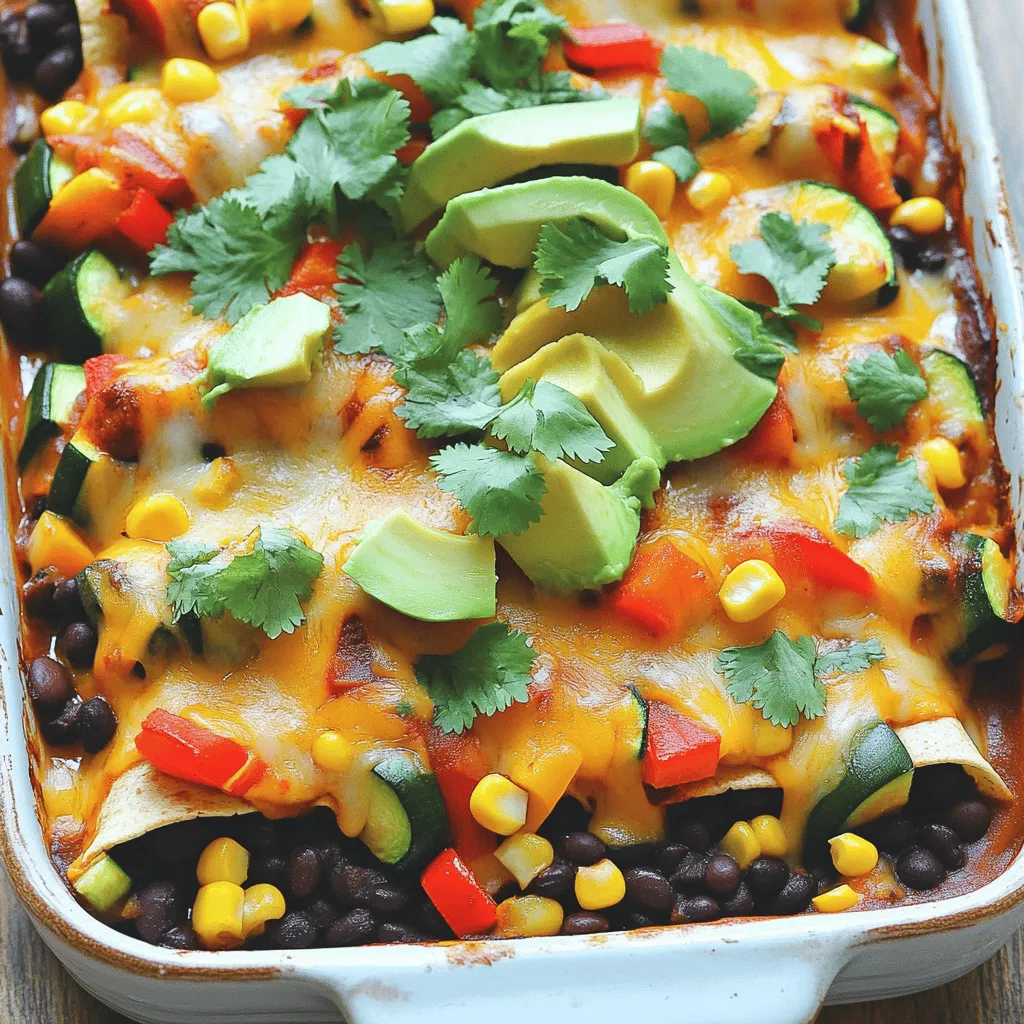
Variations
Customizing Your Dish
You can make your vegetarian enchilada casserole unique with some simple changes. If you like heat, try a spicy vegetarian enchilada casserole. Add diced jalapeños or a splash of hot sauce to the veggie mix. This gives your dish a nice kick!
For a taco-flavored enchilada casserole, you can use taco seasoning instead of cumin and smoked paprika. This adds a new flavor twist. You can also mix in some diced tomatoes or black olives for extra taste and texture.
Meal Prep Ideas
Meal prepping is a smart way to save time. Here are some tips for busy weeknights. You can make your casserole a day ahead. Just follow the steps, but do not bake it. Cover it well and store it in the fridge. When ready, bake it as per the instructions.
If you want to freeze the casserole, assemble it and wrap it tightly in foil. It can stay in the freezer for up to three months. When you want to eat it, thaw it overnight in the fridge. Then, bake it as usual.
Enjoy these ideas and get creative with your vegetarian enchilada casserole!
Storage Info
Proper Storage Techniques
To keep your vegetarian enchilada casserole fresh, choose airtight containers. Glass or plastic containers work well. Make sure they can hold the casserole without crowding. For best results, let the casserole cool down before storing.
Store leftovers in the fridge for up to four days. If you want to keep it longer, consider freezing. Wrap the casserole tightly in plastic wrap and then in foil. This will prevent freezer burn and keep it tasty.
Reheating Instructions
You can reheat your casserole in two ways: microwave or oven.
For the microwave, place a portion on a microwave-safe plate. Cover it with a damp paper towel to keep moisture. Heat it for about 2-3 minutes, checking if it’s warm throughout.
For the oven, preheat it to 350°F (175°C). Place the casserole in a baking dish and cover it with foil. Bake for about 15-20 minutes. This method keeps the cheese nice and melty.
If you want the top crispy, remove the foil for the last 5 minutes. Enjoy your meal!
FAQs
Common Questions
How to make enchilada sauce from scratch?
To make enchilada sauce at home, combine 2 tablespoons of olive oil with 2 tablespoons of flour in a pot over medium heat. Stir until smooth. Add 2 cups of vegetable broth, 1 can of tomato sauce, and spices like chili powder, cumin, and garlic powder. Simmer for 15 minutes. This sauce adds a fresh taste to your vegetarian enchilada casserole.
Can I use flour tortillas instead of corn?
Yes, you can use flour tortillas. They will add a different texture and flavor. However, corn tortillas are traditional and give a unique taste to the casserole. Choose what you enjoy most!
What to serve with vegetarian enchilada casserole?
This dish pairs well with a fresh salad, guacamole, or Mexican rice. You can also add a dollop of sour cream or Greek yogurt for creaminess. Fresh cilantro on top adds a lovely touch too.
How long can leftovers be stored in the fridge?
Leftovers can last for about 3 to 5 days in the fridge. Store them in an airtight container to keep them fresh. You can also freeze the casserole for up to 3 months. Just make sure to reheat well before serving again!It uses simple ingredients like black beans, corn, and fresh veggies. You’ll need about 30 minutes to prep and 50 minutes to cook. This recipe serves six people.
Comprehensive Recipe Steps
1. Preheat your oven to 375°F (190°C).
2. Heat olive oil in a large skillet over medium heat.
3. Sauté chopped red onion and minced garlic for 2-3 minutes until soft.
4. Add diced bell pepper and zucchini, cooking for 5 minutes.
5. Stir in rinsed black beans, corn, ground cumin, and smoked paprika. Cook for 2-3 minutes more.
6. Spread a thin layer of enchilada sauce in a 9×13 inch baking dish.
7. Layer 3 corn tortillas over the sauce, slightly overlapping.
8. Add half of the vegetable mixture and sprinkle with 1/3 of the cheese.
9. Repeat the layers until all ingredients are used, ending with tortillas.
10. Pour remaining enchilada sauce over the top layer and add the rest of the cheese.
11. Cover the dish tightly with aluminum foil and bake for 20 minutes.
12. Remove the foil and bake for another 10-15 minutes until the cheese bubbles and turns golden.
13. Let it cool for a few minutes, then slice and serve with cilantro, avocado, and sour cream, if desired.Enjoy!
This blog post explored a tasty vegetarian enchilada casserole. We covered key ingredients like black beans, corn, and spices. You learned to prepare the casserole with easy steps, layer flavors, and bake it to perfection. I shared tips for customization and meal prep, ensuring your dish fits your needs. Remember, proper storage and reheating help you enjoy leftovers. With these insights, you can create a delicious meal for any occasion. Happy cooking!
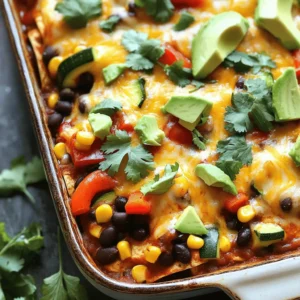

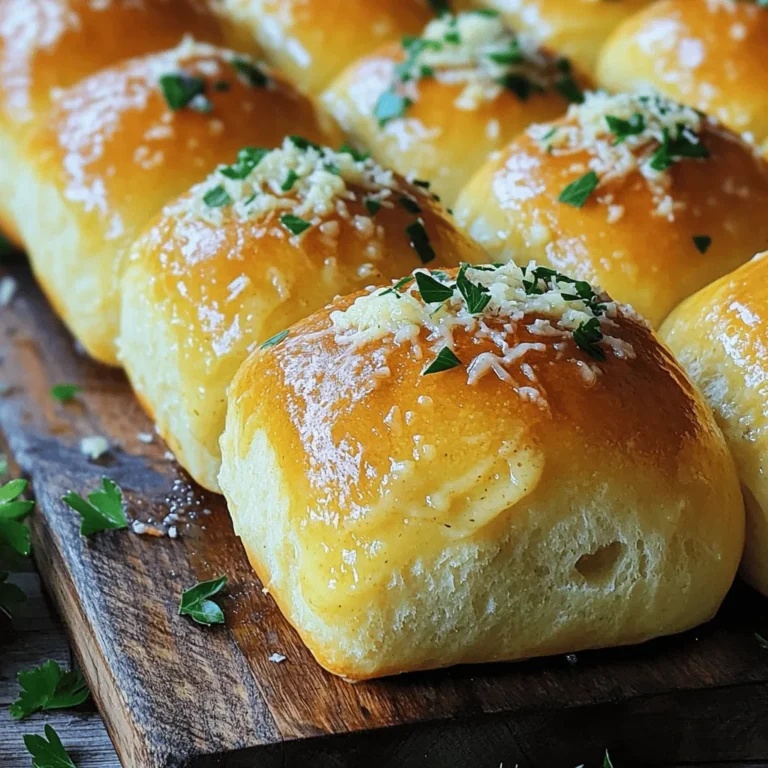
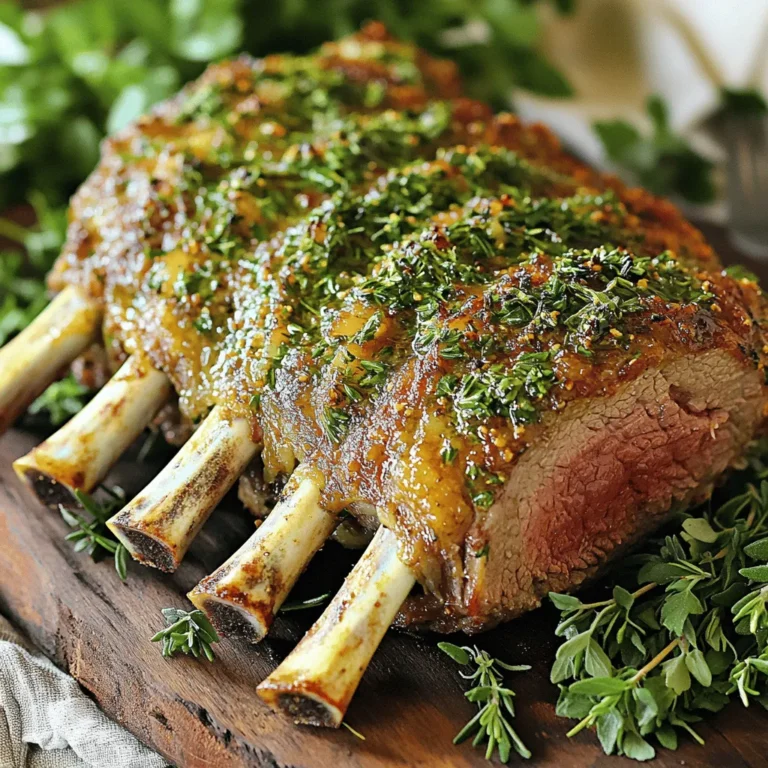
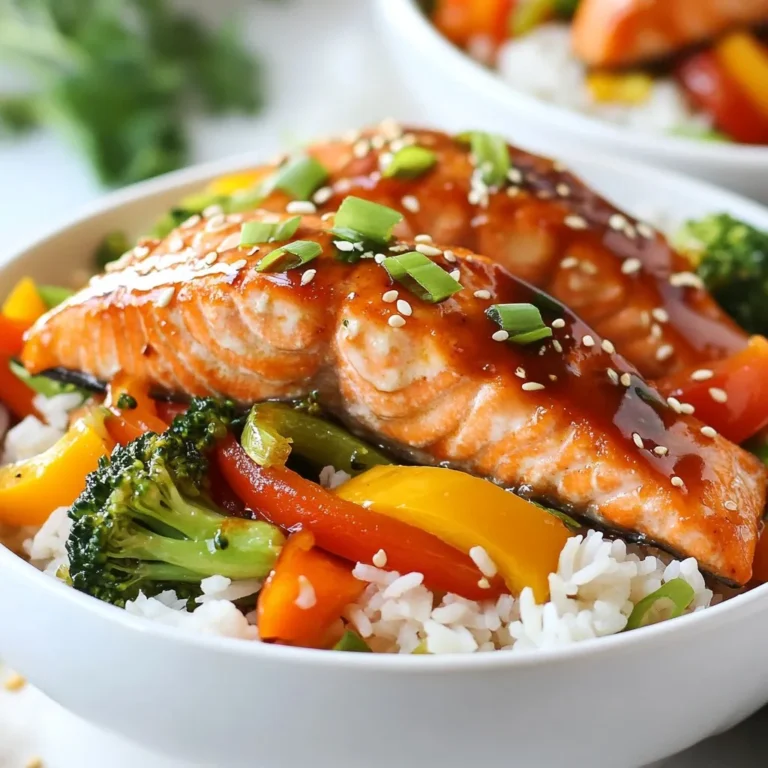
. Start by gathering all your ingredients. You will need chicken, garlic, lemon juice, and spices. If you use wooden skewers, soak them in water for at least 30 minutes. This step helps keep them from burning on the grill. In a large bowl, mix the minced garlic, lemon juice, lemon zest, olive oil, smoked paprika, cayenne pepper, ground cumin, salt, and pepper. Whisk these together until they blend well. Then add the chicken cubes. Make sure each piece is coated in the marinade. Cover the bowl and place it in the fridge. Let it marinate for at least 1 hour, or longer if you have time. This will add great flavor to the chicken. Preheat your grill to medium-high heat. If you use a grill pan, heat it over medium on the stove. Once your chicken has marinated, thread the pieces onto the skewers. Leave a small space between each piece. This helps the chicken cook evenly. Grill the skewers for about 10 to 12 minutes. Turn them often to get nice grill marks. Check that the chicken reaches an internal temperature of 165°F (75°C). After grilling, let the skewers rest for a few minutes. This keeps the juices inside. Finally, garnish with fresh parsley before serving. This adds a nice touch to your dish. For the full recipe, check the instructions above. To get the best flavor, use fresh ingredients. Fresh garlic and lemon juice give a bright taste. When mixing the marinade, let the spices blend well. They create a rich flavor. Don't rush the marinating. Allow at least one hour, or better yet, overnight. This soaking time lets the chicken absorb all those tasty flavors. Adjust the cayenne pepper based on your spice level. This way, you can make the dish mild or fiery to fit your taste. One common mistake is not soaking wooden skewers. If you skip this step, they can burn on the grill. Always soak them for at least thirty minutes. Another mistake is overcrowding the skewers. Leave some space between the chicken pieces. This helps them cook evenly. Also, don't rush the resting time after grilling. Letting them rest keeps the juices inside, making the chicken juicy. To make your skewers look great, use a large serving platter. Arrange the skewers neatly. Add fresh lemon wedges around them for color. A sprinkle of chopped parsley on top makes it more inviting. For an extra treat, serve with a yogurt dip or tzatziki. This adds creaminess and coolness to the spicy flavors. These simple steps can elevate your dish and impress your guests. For the complete guide on making these skewers, check the Full Recipe. {{image_4}} You can swap chicken for other proteins. Try shrimp for a quick cook. Beef or pork also works well. Just adjust your cooking time to avoid overcooking. Fish, like salmon, can add a rich flavor. Each protein brings its own taste. For a vegetarian version, use firm tofu. It soaks up flavors well. You can also try mushrooms for a meaty texture. Bell peppers, zucchini, and cherry tomatoes make colorful additions. For a vegan option, skip the chicken and keep the marinade. Mix things up with different marinades. Try adding soy sauce or ginger for an Asian twist. A spicy chili paste can add heat. For a Mediterranean flair, use herbs like oregano and thyme. Experiment with what you like for new tastes. For the full recipe, check out the details above. After enjoying your spicy lemon garlic chicken skewers, let any leftovers cool down. Place them in an airtight container. Store them in the fridge for up to three days. This keeps the chicken fresh and tasty for later meals. To reheat the chicken skewers, preheat your oven to 350°F (175°C). Place the skewers on a baking sheet. Heat for about 10-15 minutes or until they are warm. You can also use a microwave. Heat them on medium power for 1-2 minutes. This way, the chicken stays juicy and delicious. If you want to save the skewers for later, freezing is a great option! Wrap each skewer in plastic wrap or aluminum foil. Place them in a freezer-safe bag. They can last up to three months in the freezer. When you are ready to eat them, thaw them in the fridge overnight. Then, reheat as mentioned above for a tasty meal. For the full recipe, check out the link! You should marinate chicken for at least 1 hour. For the best taste, let it sit overnight. This longer time allows the flavors to soak in well. The garlic and lemon will really shine through. Just remember, the longer the chicken sits in the marinade, the more flavorful it becomes. Yes, you can cook these skewers in the oven. Preheat your oven to 400°F (200°C). Line a baking sheet with foil for easy cleanup. Place the skewers on the sheet and bake for about 15-20 minutes. Make sure to turn them halfway through for even cooking. Check that the chicken reaches 165°F (75°C) inside. These skewers go great with many side dishes. Here are some tasty options: - Grilled vegetables like bell peppers and zucchini - A fresh green salad with lemon vinaigrette - Rice or quinoa to soak up the juices - Garlic bread for a crunchy contrast Each of these sides will add a nice balance to the meal. To change the spice level, simply adjust the cayenne pepper. For less heat, use half a teaspoon or skip it. If you want more spice, add an extra teaspoon. You can also use spicy marinades or hot sauce for extra kick. Always taste as you go, so you can find your perfect level of heat. For the full recipe, check the earlier section. Enjoy cooking! You learned how to make Spicy Lemon Garlic Chicken Skewers. We covered the main ingredients, marinade, and garnishes. I provided step-by-step instructions for grilling. You also got tips for perfect flavor and common mistakes to avoid. There are variations, like using different proteins and marinades. Lastly, I shared storage info and answered key FAQs. Try these skewers for your next cookout. Enjoy the bold flavors and easy prep!](https://goldendishy.com/wp-content/uploads/2025/06/b1f94ef8-81fb-4621-8ae2-1513b5b656e4-768x768.webp)
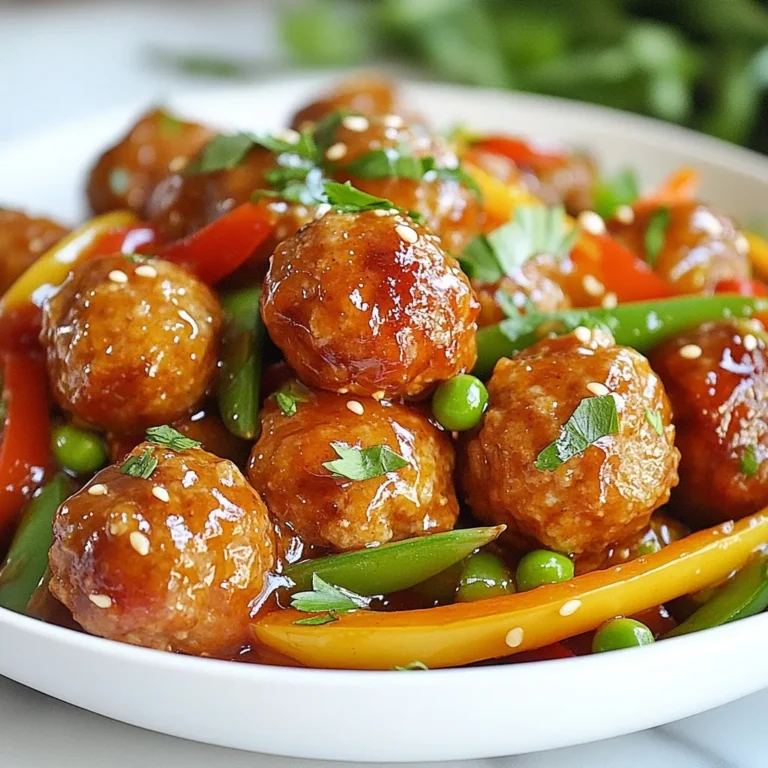
![- 2 boneless, skinless chicken breasts - 1 cup buttermilk - 1 cup all-purpose flour - 1 teaspoon baking powder - 1 teaspoon smoked paprika - 1/2 teaspoon garlic powder - 1/2 teaspoon cayenne pepper - Salt and freshly ground black pepper, to taste - 4 ready-made waffles (or homemade) - 2 tablespoons honey - Maple syrup, for drizzling - Fresh parsley, chopped, for garnish In this easy chicken and waffles recipe, you start with two boneless, skinless chicken breasts. Soak them in one cup of buttermilk. This step makes the chicken juicy and tender. Next, prepare the breading mix. You need one cup of all-purpose flour, one teaspoon of baking powder, one teaspoon of smoked paprika, half a teaspoon of garlic powder, and half a teaspoon of cayenne pepper. Don’t forget to add salt and pepper to taste. For the waffles, you can use four ready-made waffles or make your own. To finish, you will need two tablespoons of honey and maple syrup for drizzling. Chop some fresh parsley for garnish. This dish combines sweet and savory flavors, making it a favorite for many. Check out the Full Recipe to see how to put it all together. - Immerse chicken in buttermilk. - Cover and refrigerate. Start by taking two boneless, skinless chicken breasts. Place them in a bowl and pour in one cup of buttermilk. Make sure the chicken is fully coated. Cover the bowl with plastic wrap and set it in the fridge. Let it sit for at least one hour, or overnight for the best flavor. The buttermilk helps tenderize the chicken and adds a nice tang. - Combine flour and spices. - Mix to create a uniform dry mixture. Next, grab a shallow dish. In it, combine one cup of all-purpose flour with one teaspoon of baking powder, one teaspoon of smoked paprika, half a teaspoon of garlic powder, and half a teaspoon of cayenne pepper. Add salt and black pepper to taste. Mix well until everything is even. This blend will give your chicken a delicious crust. - Dredge marinated chicken in flour mixture. - Shake off excess flour. After marinating, take the chicken out of the fridge. Let the extra buttermilk drip off. Now, dredge each piece in the flour mixture. Make sure to coat both sides well. Once coated, shake off any excess flour. This step is key for achieving a crispy texture. - Heat oil in a skillet. - Fry chicken until golden-brown. In a large skillet, heat about half an inch of oil over medium-high heat. Wait until the oil is shimmering. Carefully place the coated chicken breasts into the skillet. Fry each piece for about 5-7 minutes on each side. They should turn a beautiful golden-brown color. Check the internal temperature; it should reach 165°F. Once cooked, transfer the chicken to a plate lined with paper towels to soak up excess oil. - Toast waffles according to instructions. While the chicken fries, it’s time to warm the waffles. You can use ready-made waffles or make your own if you prefer. Just toast them according to the package instructions until they are crispy and heated through. This will balance the hot chicken nicely. - Layer waffle and chicken. - Drizzle with honey and maple syrup. To assemble, take a warm waffle and place it on a serving plate. Top it with a piece of the golden fried chicken. Now, for the fun part! Drizzle honey generously over the chicken. Then, add a touch of maple syrup according to your taste. This sweet and savory combo makes every bite a delight. - Ensure oil is hot before frying. Hot oil makes the chicken crispy. - Don’t overcrowd the skillet. This helps keep the oil hot and even. - Stack chicken slightly off-center. This adds height and looks appealing. - Garnish with parsley and drizzle syrup. It gives color and extra flavor. - Consider brining chicken overnight. This makes it juicier and more flavorful. - Experiment with different spices. Try herbs or blends for new tastes. For a detailed guide, check out the Full Recipe. {{image_4}} You can switch things up with grilled chicken instead of fried. Grilled chicken has a nice smoky flavor. Plus, it's a lighter option. I love using chicken thighs for this dish. They are more juicy and tender than breasts. Thighs also add great flavor to the meal. For the waffles, try adding flavors like cinnamon or vanilla. These will give your dish a fun twist. You can also make mini waffles. They are perfect for a bite-sized treat. Kids love them, and they are easy to share. If you want to change the sweet element, try agave syrup instead of honey. It’s a nice alternative for a sweeter touch. You can also use a fruit compote. Fresh berries or peaches work great and add a fruity burst. These options make your chicken and waffles even more special. For the full recipe, check out the ingredients and steps above! After you savor your chicken and waffles, store any leftovers in an airtight container. This keeps the food fresh and safe. The dish is best consumed within 2 days. If you wait too long, the taste and texture will suffer. You can freeze the cooked chicken and waffles for later. Be sure to store them separately. This way, the waffles do not get soggy. When you are ready to eat, reheat the chicken and waffles in the oven for best results. This helps keep everything crispy and tasty. When it's time to enjoy leftovers, use an oven or air fryer to reheat the chicken. This method preserves the crispy coating. Avoid using a microwave, as it can make the chicken chewy and wet. Keeping the texture nice is key to enjoying your meal again. To make homemade waffles, start with a simple batter. Mix together: - 1 cup all-purpose flour - 1 tablespoon sugar - 1 teaspoon baking powder - 1/2 teaspoon salt - 1 cup milk - 1 large egg - 2 tablespoons melted butter Combine all the dry ingredients in one bowl. In another bowl, whisk the wet ingredients. Mix them together until just combined. Cook in a preheated waffle maker for about 5 minutes until golden brown. You can also use my [Full Recipe] for a quick option with ready-made waffles. Yes! You can explore using turkey or even tofu for a vegetarian option. Turkey breast works well as a leaner choice. For tofu, press it to remove excess moisture, then marinate like the chicken. This adds great flavor and keeps it moist. To get crispy chicken, keep the oil hot. Heat it to about 350°F before frying. This helps form a crust. Don't overcrowd the skillet; fry in batches if needed. Cook until golden brown, about 5-7 minutes per side. Yes, meal prepping is easy! You can marinate the chicken in advance. Also, cook and freeze the chicken separately from the waffles. Store in airtight containers. This meal stays tasty for up to two days in the fridge. You can spice up your chicken with different seasonings. Try adding more cayenne pepper or smoked paprika for heat. Top your waffles with fresh fruit or whipped cream. Maple syrup adds sweetness, but feel free to experiment! For sides, think about fresh fruit or a light salad. Sliced strawberries or mixed berries add a nice touch. A simple green salad can balance the dish’s richness. You can also serve it with sweet potato fries for a fun twist. You learned how to make a tasty chicken and waffles dish. We covered marinating chicken, preparing breading, and frying until golden-brown. You also saw tips for storage and variations. Don't be afraid to try different spices or use grilled chicken. This dish is fun and delicious. Enjoy making it and sharing with friends!](https://goldendishy.com/wp-content/uploads/2025/06/c6fcab88-53c4-4cda-8439-7edbb7c77c72-768x768.webp)